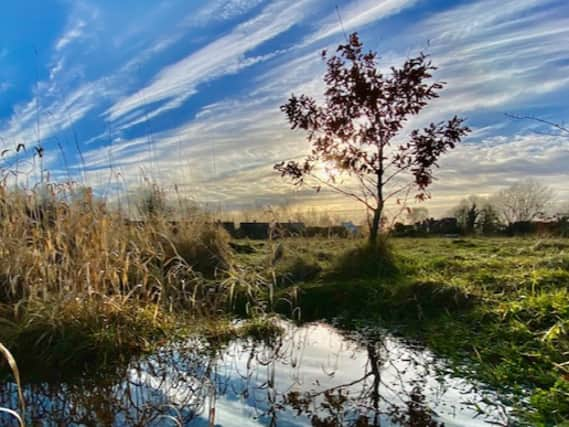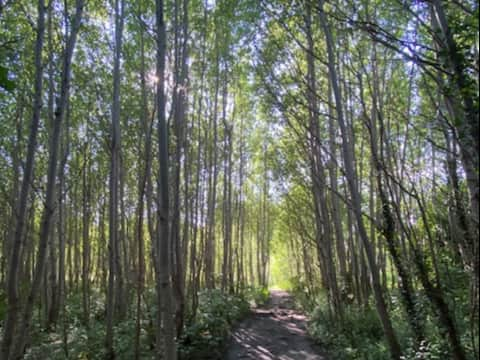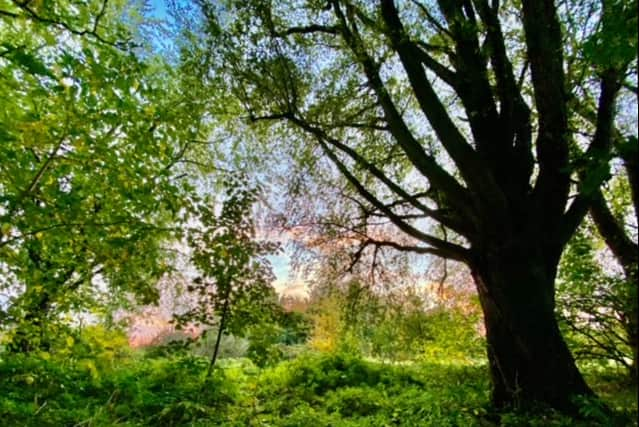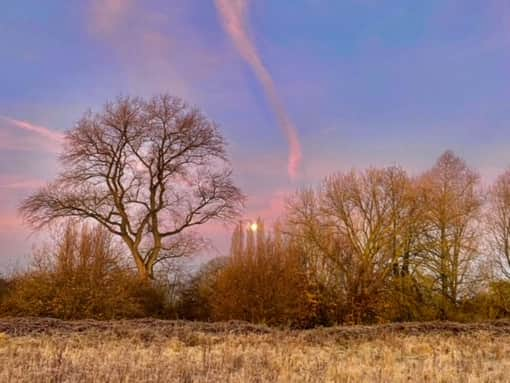Ryebank Fields: the battle for the future of a much-loved Manchester green space
This article contains affiliate links. We may earn a small commission on items purchased through this article, but that does not affect our editorial judgement.


A Manchester green space is at the centre of a long-running development row involving controversial plans to build houses there.
Ryebank Fields has become a popular urban oasis for nature in Chorlton and is much loved by local residents as somewhere for dog walking and enjoying the great outdoors.
Advertisement
Hide AdAdvertisement
Hide AdBut Manchester Metropolitan University (MMU) is currently going through a lengthy process of selling off the land to a developer to build homes there.
The campaign Save Ryebank Fields, which brings together a number of community groups including the Friends of Ryebank Fields, has vowed to stop the construction work and instead wants the land designated as a local nature reserve.
What is Ryebank Fields?
Located at the end of Ryebank Road, the fields were once used as clay pits for a nearby brickworks which stood where there is now a school.
The works closed before World War Two and the pits filled with water but after the war it was decided they should be filled in.
Advertisement
Hide AdAdvertisement
Hide AdAnecdotal evidence then suggests the pits were used as an unregistered landfill site for quite some time.
Eventually the land was remediated by the council before being gifted to what was then Manchester Polytechnic for sports use.
After the polytechnic became Manchester Metropolitan University, the final football match was held there in 1996 before student sport was shifted to Carrington, and the land became unused.
Since then it has rewilded and campaigners say it is now a precious green site home to wildflowers, rare trees and bird species which are important for conservation.
Advertisement
Hide AdAdvertisement
Hide AdNow, though, MMU is in the process of searching for a developer who will build dozens of new homes on the land once it has been sold.
Who are the campaigners against building?
The campaign to prevent house-building at the site is called Save Ryebank Fields.
One part of it is the residents’ group the Friends of Ryebank Fields, which formed in November 2018, a year after the first development proposal for the site was released.
The efforts to prevent new homes going up on the fields is also supported by a residents’ group on the Trafford site of the site and the Friends of Longford Park, who are connected to a conservation area Ryebank Fields backs on to.


Advertisement
Hide AdAdvertisement
Hide AdThere is also a protest camp on the fields themselves set up by a group including members of Extinction Rebellion (XR) and Animal Rebellion.
This, though, is a separate entity to the Friends’ group, although they do share the same goal of saving the fields.
Why do the campaigners want to prevent house-building at Ryebank Fields?
The campaigners have highlighted the beauty and biodiversity of the site as well as the importance of having green spaces in built-up areas where residents can enjoy nature.
They also said that given the climate emergency it is vital for environmental reasons that green land is not built on.
Advertisement
Hide AdAdvertisement
Hide AdJulie Ryan from the Friends of Ryebank Fields said: “Ryebank Fields is a beautiful urban oasis. There’s a beautiful aspen grove on the perimeter with a wonderful path through it created by a local resident.
“In 2000 an inspired resident planted 300 acorns as at the time people were planting trees against global warming, as it was then called. We’ve now got all these oak saplings, which are wonderful to see, and more come up each year.
“There are all sorts of insects including ground-nesting bees, damselflies and crickets, foxes, bats and more than 70 species of bird, including some red-listed ones.
“We’ve got a native black poplar which is one of the UK’s rarest trees. Poplars were mass-planted during the Industrial Revolution because they could withstand the smoky conditions.


Advertisement
Hide AdAdvertisement
Hide Ad“That makes it important to us as we are living in one of the most polluted parts of Manchester.
“It’s really important from a climate point of view that we keep every bit of green space.
“Manchester has the least green infrastructure of any of the 10 boroughs of Greater Manchester.
“Ryebank Fields is a natural climate solution on our doorstep and we need to retain it.”
Advertisement
Hide AdAdvertisement
Hide AdThe Friends’ group also says Ryebank Fields has some intriguing links to Manchester’s past.
Some of the trees on the boundary were planted in the late 1800s by the third wife of John Rylands.
There is also a location within the site called the Nico Ditch, which it is thought could denote the boundary between two old Anglo-Saxon kingdoms.


In addition, the campaigners have spoken of the link between the past and the present and the importance for people, especially children, of being able to access wild places.
Advertisement
Hide AdAdvertisement
Hide AdJulie said: “Every time I walk through the fields I think of that history. It really grounds you.
“It’s the sort of place where you listen to the birdsong. It’s a natural barrier to the outside world, it takes you away from everyday life.
“From a mental health point of view it’s amazing, you can just get lost in nature.
“Children come alive in Ryebank Fields. They can interact with nature, there are hidden swings and dens. It’s an adventure in itself.”
What plans have been produced for Ryebank Fields?
Advertisement
Hide AdAdvertisement
Hide AdInitially the plan was for 70 executive homes, but this then changed to a mixed development with up to 120 houses of varying sizes.
The Friends’ group has raised concerns about the consultation process, claiming there was no meaningful way for residents to have their say if they did not agree with the idea of building homes on Ryebank Fields at all.
The land was then put on the market by the university in September 2020.
What do the campaigners want to happen with Ryebank Fields?
Advertisement
Hide AdAdvertisement
Hide AdThe Friends’ group put a bid in to MMU to create a nature reserve there.
Julie said: “We would love to work with a partner to save the land in perpetuity.
“It’s not enough for us to win this campaign. We need to save this land forever.


“We’ve got plans for the site. We planted a community orchard in memory of a resident who had fruit trees outside his house for people to pick as they passed, and we’ve got a community growing area with raised beds.
Advertisement
Hide AdAdvertisement
Hide Ad“We don’t want to put too much of a human print on it, though, we would rather it belonged to the foxes and the ground-nesting bees and all the birds.”
The Friends’ group criticised the university over the bidding process, saying they were knocked back after they said questions about track records of delivering developments were not applicable.
They queried if it had been set up in such a way that all avenues other than building on the land were seemingly ruled out.
However, MMU has responded strongly to this, saying the Friends’ group wanted the land for free which was not going to be acceptable given the university’s charitable status and requirement to achieve best value in the disposal of any assets.
Advertisement
Hide AdAdvertisement
Hide AdThe university also said the group had not provided any plan or shown it had the funding available to manage the site long term.
In addition, MMU said that once the development framework for the site had been adopted in 2019, bids needed to be for the land purposes set out in that document.
Another avenue the Friends’ group is pursuing is writing to Manchester City Council to see if there are any covenants on the land which restrict what can be done with it.
What is the issue with asbestos?
In May 2020 a member of the public found asbestos on the Ryebank Fields site.
Advertisement
Hide AdAdvertisement
Hide AdSubsequent investigations found small quantities of the substance across a large swathe of the site. The report also suggested that due to erosion asbestos was coming to the surface.
This is a particular point of contention between the university and campaigners.
MMU responded by closing off the site, which as it is private land means going onto Ryebank Fields is currently trespassing.
This has been met with protests, and the camp is still in place within the site.
Advertisement
Hide AdAdvertisement
Hide AdThe campaigners are worried about other hazardous objects and substances that may be buried beneath the surface from the time when it was a landfill site, and fear what might happen if digging for houses begins close to homes and a school.
MMU’s own webpage on Ryebank Fields says asbestos has been cleared and the airborne risk will remain low “as long as the soil is undisturbed”.
This is exactly what the Friends’ group says its plan for a nature reserve at Ryebank Fields would have done.
The university, though, says there is an ongoing, continual risk of asbestos coming to the surface as the report suggests it is caused by weather and people using the area.
Advertisement
Hide AdAdvertisement
Hide AdThat, MMU says, means the whole area needs properly remediating and cleaning up and it says the cost of this means it can only be done by selling off the site.
In addition, it says any attempt to buy the land will need to involve putting forward plans to remediate the site or having the funds to actively manage its risks long term.
What else does Manchester Metropolitan University say?
MMU directed us to a page on its website dedicated to the Ryebank Fields project.
It said that the land was allocated to it as part of the process of becoming a university from a polytechnic, and it is acting as the landowner to sell it as part of its ongoing effort to consolidate its presence in the city centre.
Advertisement
Hide AdAdvertisement
Hide AdIt said a shortlist of four developers has now been drawn up and a decision will be made in the coming months.
Once a contract is signed, the developer will be expected to work with the community on proposals before a planning application is submitted, a process MMU expects to take at least a year.
The university said it is committed to its environmental goals and can deliver the housing within that, by creating a low-traffic neighbourhood and low-carbon buildings.


MMU said: “The University is in the process of selling Ryebank Fields. The University has a long-standing commitment to sustainability and managing the environment. We are aiming to work with an appointed developer to deliver a housing development on the site that reflects this commitment.
Advertisement
Hide AdAdvertisement
Hide Ad“The University has charitable status and will not seek to make a profit from the sale of land. Our plan is to invest any proceeds into our core purpose of providing high quality teaching and research and to achieve zero carbon status by 2038 by investing in an ambitious Carbon Management Plan.
“The sale is designed to provide housing in line with Manchester City Council’s development plans for the Chorlton area.
“We know some members of the local community have regularly used Ryebank Fields and may be disappointed, but we must prioritise public safety. We have briefed local councillors on our plans and will provide regular updates to residents over the coming months.”
What has Manchester City Council said?
The council has said the only role it has concerning Ryebank Fields is that of local planning authority to decide on any applications that come forward.
Advertisement
Hide AdAdvertisement
Hide AdA spokesperson said: “The Rye Bank Road development framework has been developed by landowner, Manchester Metropolitan University (MMU). At this time, no planning application has been submitted for consideration.
“And any future application would have to be assessed against and having regard to both national and local planning policy and would be subject to further consultation with local residents.”
Comment Guidelines
National World encourages reader discussion on our stories. User feedback, insights and back-and-forth exchanges add a rich layer of context to reporting. Please review our Community Guidelines before commenting.
